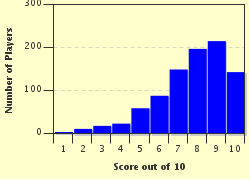Quiz Answer Key and Fun Facts
1. With its name coming from the Arabic word for "desert", this area is made up of hard, rocky, barren plateaus called "hamada". Sand dunes form only a small part of the area. Where am I?
2. A UNESCO World Heritage Site in Quang Ninh province, Vietnam, this area consists of over three thousand monolithic limestone islands. Where am I?
3. Known in Tibet as "Chomolungma", and known to the world prior to 1856 as Peak XV, this site sits on an international border between China and Nepal. Where am I?
4. The fifth largest continent, with no permanent human residents, this piece of land is technically the largest desert in the world. Where am I?
5. Stretching more than 1600 miles in the Southern Hemisphere, this is the only reef on Earth that can be seen from space. Where am I?
6. Known as "Ongtupqa" in the Hopi language, this feature is not the deepest or widest, but it is at least seventeen million years old. Where am I?
7. On the 2011 list of the Seven Wonders of Nature, the name for this site comes from the Guarani or Tupi words for "big water". It lies on the border between Brazil and Argentina. Where am I?
8. It is the world's largest in terms of drainage basin, and covers 40% of the continent where it is located. One in ten species of the world live in this area. Where am I?
9. A province of Ecuador, this is where Charles Darwin visited on his voyage of the Beagle and formulated his theory of natural selection. Where am I?
10. In the Maasai language, it means "endless plains". It has a large lion population and is one of the best places to see them in their natural environment. Where am I?
Source: Author
ponycargirl
This quiz was reviewed by FunTrivia editor
Pagiedamon before going online.
Any errors found in FunTrivia content are routinely corrected through our feedback system.


